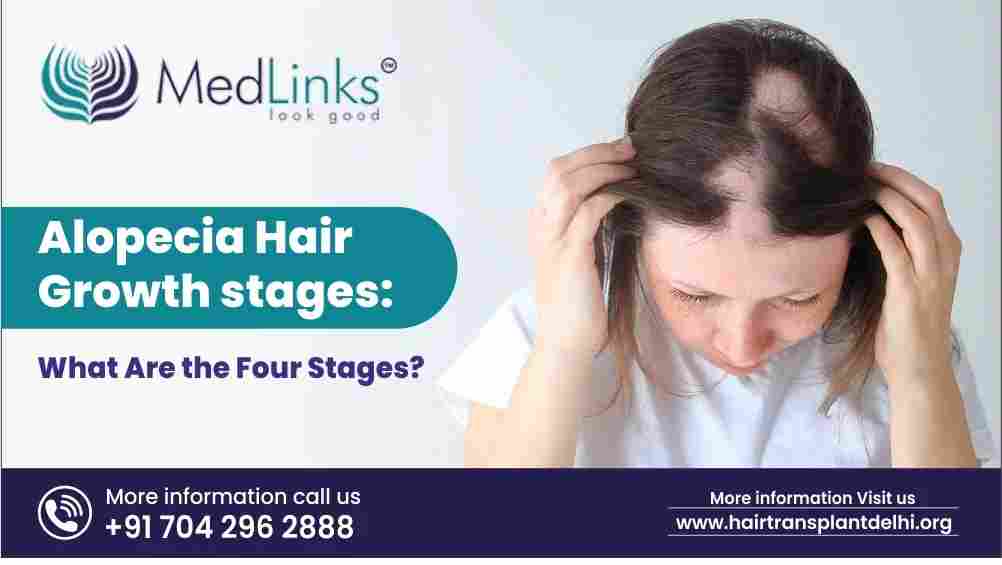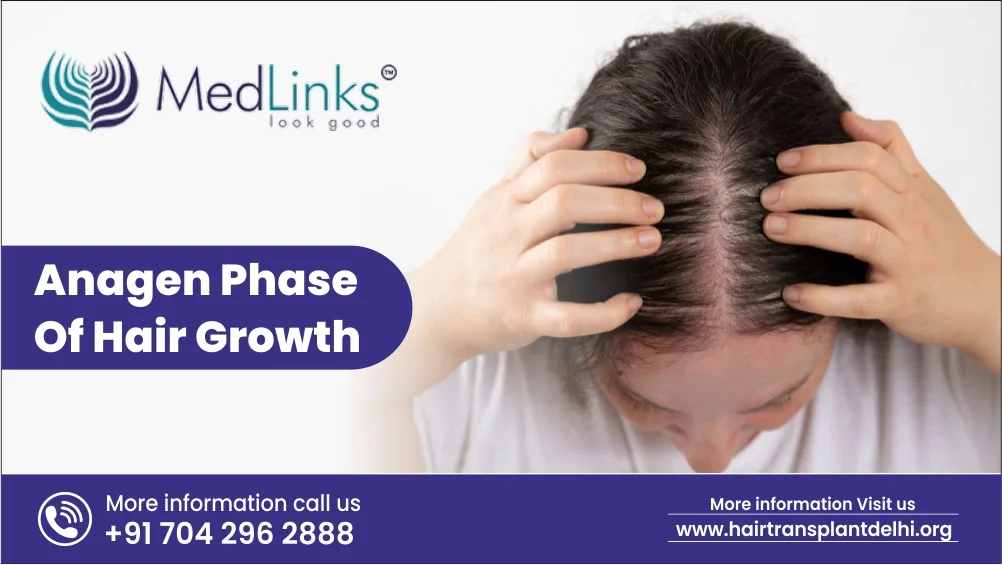Alopecia is a condition characterized by hair loss from the scalp or other parts of the body, and it affects millions of people worldwide. Hair loss can be a stressful experience, impacting both one’s appearance and self-confidence. However, understanding the alopecia hair growth stages recovery can help individuals manage their expectations and take appropriate steps to stimulate hair regrowth. This blog will delve into the different stages of hair growth, factors influencing hair restoration, and how to manage alopecia effectively.
Understanding Alopecia
Before diving into the stages of hair growth, it is essential to understand what alopecia is. Alopecia is an umbrella term that refers to various forms of hair loss, including:
- Alopecia Areata: An autoimmune disorder where the immune system attacks hair follicles, leading to patchy hair loss.
- Androgenetic Alopecia: Also known as male or female pattern baldness, this is caused by genetics and hormonal factors.
- Telogen Effluvium: Temporary hair loss due to stress, illness, or hormonal changes.
- Alopecia Totalis: Complete hair loss on the scalp.
- Alopecia Universalis: Total loss of hair on the body, including eyebrows, eyelashes, and scalp hair.
Hair loss occurs when the hair follicle becomes weak or inactive. The good news is that, in many cases, hair can regrow with the proper treatment and time. The hair growth process typically follows a cycle of four stages. Understanding these stages can provide insight into how hair regrowth works after alopecia.
The Four Stages of Hair Growth
Hair growth occurs in a cyclical process that involves four main stages: anagen, catagen, telogen, and exogen. Each phase plays a vital role in the growth and shedding of hair.
1. Anagen (Growth Phase)
The anagen phase is the active growth phase of the hair follicle, where hair cells rapidly divide and produce new hair. This stage lasts anywhere from two to seven years, depending on factors like genetics, age, and health. During the anagen phase, hair grows at an average rate of half an inch per month.
In cases of alopecia, the anagen phase may be prematurely shortened, resulting in weakened hair or halted growth. However, treatments such as topical medications, platelet-rich plasma (PRP) therapy, and hair transplantation aim to prolong this phase and stimulate the regrowth of strong, healthy hair.
2. Catagen (Transition Phase)
The catagen phase marks the transition between the growth and resting phases of hair. Lasting only two to three weeks, this stage involves the cessation of hair production. The hair follicle shrinks, and the base of the hair strand separates from the blood supply, effectively cutting off nourishment.
In individuals with alopecia, the catagen phase may be triggered more frequently, leading to a higher rate of hair shedding. However, with the right interventions, the transition phase can be minimized, allowing hair to remain in the anagen (growth) phase for longer periods.
3. Telogen (Resting Phase)
The telogen phase is the resting phase of hair follicles and can last for around three months. During this stage, the hair strand is fully formed but not actively growing. It remains attached to the scalp, awaiting the start of the exogen phase.
Alopecia often pushes a significant number of hair follicles into the telogen phase prematurely, leading to increased hair shedding. This is especially true in cases of telogen effluvium, where stress or illness disrupts the hair cycle, causing more hair to enter this resting stage simultaneously. Recovery from alopecia involves reducing the number of follicles in the telogen phase and reactivating the growth cycle.
4. Exogen (Shedding Phase)
The exogen phase is the final stage of the hair cycle, where the hair strand is shed from the scalp. New hair will eventually grow from the follicle, restarting the anagen phase. Losing 50 to 100 hairs per day during this stage is considered normal.
In alopecia patients, however, the exogen phase may become more pronounced, resulting in excessive hair loss. Treatments aim to accelerate the transition back to the anagen phase, promoting faster regrowth and reducing hair fall.
Hair Regrowth in Alopecia: What to Expect
Recovering from alopecia requires patience, as hair regrowth is a slow and gradual process. Regrowth typically follows a predictable timeline, with noticeable changes occurring in the following stages:
1. Initial Regrowth (1-3 Months)
In the first few months of recovery, hair regrowth may be minimal. You may notice thin, fine strands emerging from the scalp in areas where hair loss occurred. This “baby hair” is often lighter in color and weaker than the surrounding hair, but it is a positive sign that the follicles are beginning to reactivate.
2. Strengthening and Thickening (3-6 Months)
As recovery progresses, the newly grown hair becomes thicker and stronger. During this stage, you may notice the appearance of small patches of denser hair in previously bald spots. Hair texture may change slightly, but consistent treatment can help the hair regain its natural strength and quality.
3. Full Regrowth (6-12 Months)
By the 6 to 12-month mark, the majority of hair should have regrown. Bald patches may have filled in, and the texture, color, and strength of the hair should be more consistent with your natural hair. Keep in mind that full recovery depends on several factors, including the severity of the alopecia, type of treatment, and overall health.
4. Long-Term Maintenance (12 Months and Beyond)
Once the hair has fully regrown, maintaining the results is key. Ongoing treatment may be necessary to prevent relapse or additional hair loss. Topical treatments, PRP therapy, and regular check-ins with a hair specialist can help ensure long-term success.
Factors Affecting Hair Regrowth
While the hair growth stages are relatively consistent across individuals, certain factors can influence the speed and quality of regrowth:
1. Type of Alopecia
Different forms of alopecia require different treatment approaches. For instance, autoimmune conditions like alopecia areata may require steroid injections or immune-suppressing medications, while androgenetic alopecia may benefit from hormone-regulating treatments.
2. Age and Genetics
Younger individuals and those with a family history of strong hair growth may experience faster regrowth. However, genetic predisposition to hair loss, such as in androgenetic alopecia, can make recovery more challenging.
3. Nutritional Factors
A balanced diet rich in vitamins, minerals, and proteins is essential for healthy hair growth. Deficiencies in nutrients like biotin, zinc, and iron can slow the regrowth process. Supplements and a nutritious diet can help promote faster recovery.
4. Medical Treatments
Medications such as minoxidil, finasteride, and PRP therapy have been shown to improve hair regrowth in alopecia patients. Working with a hair restoration specialist can help you identify the best treatments for your specific condition.
Managing Alopecia: Tips for Promoting Hair Growth
While regrowing hair after alopecia takes time, there are several steps you can take to promote healthy hair growth and manage your condition effectively:
- Consult a Specialist: A hair restoration specialist can diagnose the type of alopecia you have and recommend a personalized treatment plan.
- Use Topical Treatments: Minoxidil and other topical treatments can stimulate hair follicles and accelerate growth.
- Adopt a Healthy Lifestyle: Stress management, proper sleep, a nutritious diet, and exercise can support hair growth and overall health.
- Consider PRP Therapy: Platelet-rich plasma therapy can help activate dormant follicles and stimulate hair regrowth.
- Stay Consistent: Hair growth takes time, and results won’t appear overnight. Stick to your treatment plan for the best results.
Conclusion
Recovering from alopecia and achieving full hair regrowth is a gradual process that requires patience, commitment, and the right treatment approach. By understanding the stages of hair growth and taking proactive measures to support your hair’s recovery, you can regain your confidence and enjoy healthy, vibrant hair once again.






